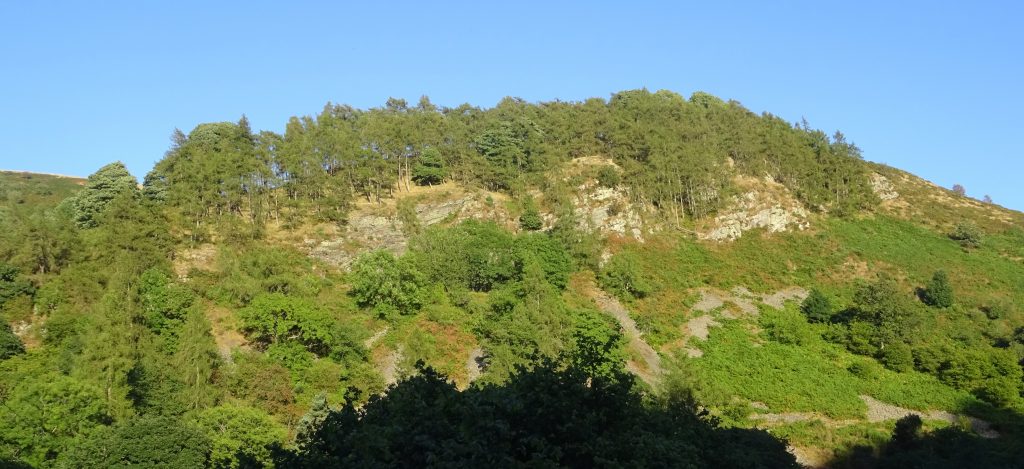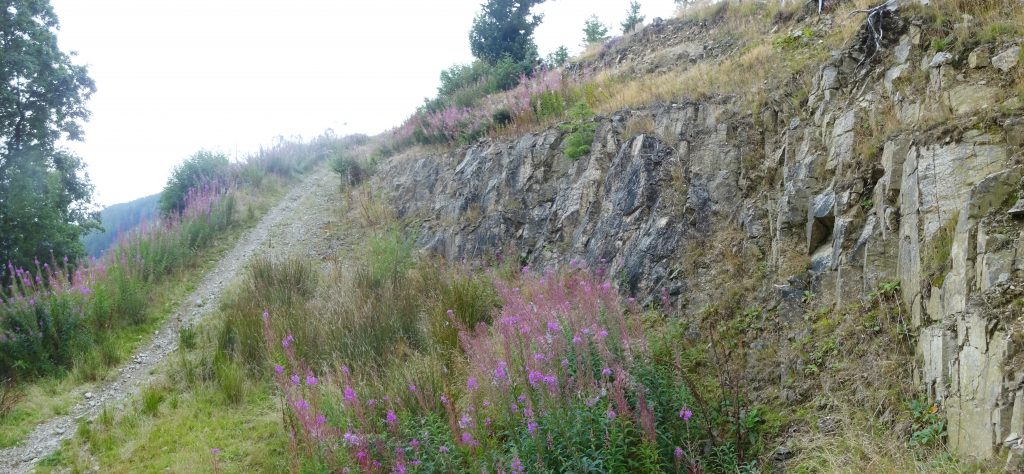The Northern Berwyn Mountains: Igneous Intrusions, Volcanic Tuffs and Volcaniclastic Sediments.

Photo 13 (above). The Afon Ceiriog River drains northwards across the extensive, folded Llangynog Formation mudstones that form much of the central Berwyn Dome. Across these relatively soft rocks the river forms a fairly broad, flat bottomed valley. However, just south of the small hamlet of Pandy the river cuts a deep, narrow gorge, the Sygun Gorge. This dramatic change in landscape is caused by a series of hard, resistant igneous intrusive bodies, and several volcanic ashes or ‘tuffs’, most of which form cliffs along the side of the gorge, as seen here, formed by the Cwm Clwyd Tuff.

Photo 14 (above). Just to the east of the Sygun Gorge the Cwm Clwyd Tuff is seen again, high up in a small side valley (called Cwm Clwyd). Here, it has been quarried, probably for road stone. At both these locations the Cwm Clwyd Tuff, and several other volcanic ashes or tuffs and igneous intrusions, lie within the Llangynog Formation or succeeding, younger mudstone/siltstone rocks. These sedimentary rocks represent background marine shelfal to inter-tidal deposits, whilst the interbedded tuffs and intrusions testify to continuing volcanic eruptions in this area during the Caradoc Stage of the Ordovician Period. All these rocks dip northwards here, indicating we are on the northern margin of the Berwyn Dome structure.

